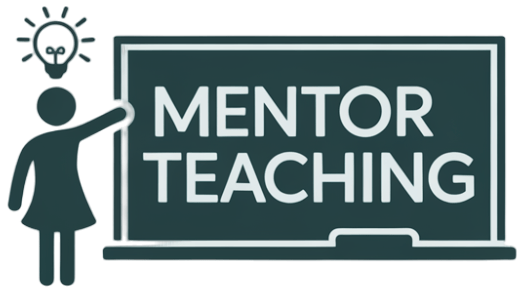Direct instruction is a crucial instructional strategy that plays a vital role in effective teaching methods. It involves teacher-led instruction with clear and explicit guidance to enhance learning outcomes. By incorporating direct instruction in lesson plans, educators can ensure that students receive structured and controlled instruction, leading to academic success.
In this article, we will delve into the concept of direct instruction and explore its benefits in creating impactful lesson plans. We will examine how direct instruction works, its philosophical underpinning, and its effectiveness in catering to diverse learner needs. Whether you are a seasoned educator or a new teacher looking to enhance your instructional strategies, understanding direct instruction will undoubtedly improve your approach to teaching.
What is Direct Instruction?
Direct Instruction is a teaching model that focuses on specific teaching tasks and small learning increments. It employs clear and explicit instruction to eliminate misconceptions and accelerate learning. With Direct Instruction, students receive carefully planned lessons designed to ensure a deep understanding of the content and accurate application of knowledge.
This approach is based on the belief that when students are provided with structured instruction, they can learn more effectively and quickly. By breaking down complex concepts into manageable tasks and incrementally building on them, Direct Instruction promotes accelerated learning.
Direct Instruction is a highly structured teaching method that aims to optimize learning outcomes. By employing this approach, educators can effectively guide students towards mastery and achievement in their academic pursuits.
Benefits of Direct Instruction:
- Clear and explicit instruction eliminates misconceptions
- Small learning increments promote accelerated learning
- Structured lessons enhance understanding and retention
- Students can accurately apply the taught content
| Teaching Tasks | Small Learning Increments | Accelerated Learning |
|---|---|---|
| Precise instruction on specific tasks | Breakdown of complex concepts into manageable parts | Structured learning for efficient progress |
| Clear learning objectives | Incremental building of knowledge | Enhanced understanding and retention |
| Elimination of misconceptions | Promotion of accurate application of knowledge | Accelerated academic achievement |
The Philosophical Underpinning of Direct Instruction
The success of Direct Instruction is rooted in its firm philosophical principles. These principles emphasize that every child can be taught and has the ability to achieve academic excellence. This approach rejects the notion that a student’s self-image should limit their potential for success. Instead, it focuses on providing the necessary support and resources to empower students to reach their full potential.
Direct Instruction also recognizes that teacher success is essential to student achievement. This method highlights the belief that with proper training, guidance, and materials, every teacher can effectively deliver instruction in the classroom. By equipping teachers with the necessary tools, they can create a conducive learning environment that fosters growth and maximizes student outcomes.
Furthermore, Direct Instruction acknowledges the potential of controlled instruction to minimize misconceptions and reinforce learning. By structuring lessons and providing explicit guidance, this approach ensures that students grasp concepts accurately and build a solid foundation of knowledge. Through controlled instruction, students are encouraged to engage actively with the material, leading to deeper understanding and improved academic achievement.
- Principle 1: Every child can be taught and has the potential to achieve academic success
- Principle 2: A student’s self-image should not limit their ability to succeed
- Principle 3: Every teacher can achieve success in the classroom with proper training and materials
- Principle 4: Disadvantaged students can catch up to their peers through direct instruction
- Principle 5: Controlled instruction minimizes misconceptions and reinforces learning
When all of these philosophical principles align within Direct Instruction, it sets the stage for educational success. This approach focuses on creating an inclusive and supportive environment where every child can thrive academically. By harnessing the power of controlled instruction, Direct Instruction provides a strong foundation for lifelong learning and achievement.
How Does Direct Instruction Work?
Direct Instruction is an instructional approach that tailors teaching to students’ ability levels, ensuring effective learning outcomes. Here’s how it works:
- Assessment and Grouping: At the beginning, students are assessed to determine their current level of mastery. Based on the assessment results, they are grouped accordingly, allowing targeted instruction.
- Structured Programs: Direct Instruction utilizes structured programs that aim for mastery of content. Skills are introduced gradually and systematically, allowing students to build a solid foundation of knowledge.
- Individualized Teaching: This approach recognizes that students have different pace and learning needs. With Direct Instruction, students learn at their own pace and receive additional instruction or can move ahead as needed, promoting personalized learning experiences.
- Continuous Reanalysis and Revision: Direct Instruction programs undergo continuous reanalysis and revision before publication. This ensures that the content and instructional strategies remain effective and aligned with the pace of learning.
To illustrate the effectiveness of Direct Instruction, below is a table showing how students of different ability levels benefit from this structured approach:
| Ability Level | Benefits of Direct Instruction |
|---|---|
| Advanced Learners | Challenge and enrichment through accelerated pacing |
| Typical Learners | Structured learning to build foundational skills and maximize mastery |
| Struggling Learners | Targeted intervention and additional support to address specific learning needs |
This visual representation of Direct Instruction emphasizes the tailored approach to instruction, accommodating students across various ability levels.
The Benefits of Using Explicit Direct Instruction in Education
Using explicit Direct Instruction in education offers several benefits. It enables teachers to create clear learning objectives for projects, activities, and lessons, ensuring students understand what is expected of them. This clarity helps students focus their efforts and motivates them to achieve their goals.
Another advantage of explicit Direct Instruction is its emphasis on sequential organization. Assignments and lessons are structured in a logical progression, allowing students to build upon their existing knowledge and skills. This sequential approach enhances their understanding and facilitates mastery of complex concepts.
To enhance student comprehension, explicit Direct Instruction relies on clear descriptions and explanations of academic skills and knowledge. By providing explicit and concise instructions, teachers ensure that students grasp the key concepts and are able to apply them effectively. Clear descriptions serve as a foundation for in-depth learning and critical thinking.
Formative assessments play a crucial role in explicit Direct Instruction, enabling teachers to assess student understanding and adapt instruction accordingly. These assessments provide valuable feedback that helps identify areas where students may be struggling and require additional support. Teachers can then adjust their teaching strategies to address these areas of need, ensuring that every student is given the necessary guidance to succeed.
Overall, explicit Direct Instruction promotes active student engagement and enhances learning outcomes. By setting clear objectives, organizing content sequentially, providing clear descriptions, and using formative assessments, teachers create an environment conducive to effective teaching and learning.
Conclusion
The ongoing debate between direct instruction and inquiry-based learning has been a topic of discussion among educators. Both methods have their own strengths and research indicates that they can be effective in different educational contexts. However, determining the best approach for teaching depends on various factors, including the subject being taught, students’ needs, and the desired learning objectives.
It is crucial for teachers to familiarize themselves with the advantages and limitations of each approach and adapt their instructional strategies accordingly. By incorporating a diverse range of teaching methods, educators can create engaging lessons that cater to the individual needs of their students. This not only enhances student learning but also promotes student achievement.
Instead of adhering exclusively to one method, teachers are encouraged to embrace a blend of direct instruction and inquiry-based learning, allowing for flexibility and adaptability in their teaching practices. This approach empowers educators to effectively meet the unique needs of their students while fostering a stimulating and inclusive learning environment.




